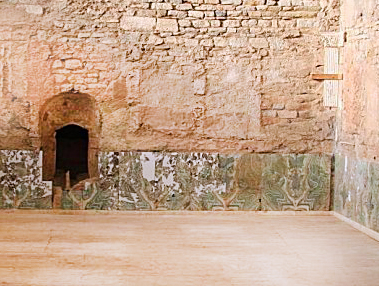When it comes to ancient Roman Imperial architecture, most people immediately think of white marble statues, columns and building fascia. While it is true that many important buildings and even piazzas were decorated with marble two thousand years ago, it was frequently not white, but colored marble, such as the beautiful green-veined Cipollino Verde, which was extracted from quarries hundreds of miles from Rome itself.
Because marble was very expensive, it was often cut in thin slabs as a cladding over less expensive stone. Unfortunately, no actual remains of marble workshops from the Imperial Era have ever been found. Little is known about the marble processing of the period, but new research sheds light on the subject and the findings are nothing short of remarkable. Researchers have just finished analyzing the marble cladding from a Roman villa dating to the second century AD. They employed special software normally used for the 3-D modeling of geological structures and discovered that when it comes to material waste, the production methods used by the Romans were even more efficient than they are today.

HIstory of cipollino verde
The researchers examined, photographed and measured 54 restored slabs of Cipollino Verde, each measuring roughly four feet square, which had been used to decorate the walls of the villa. Having found saw marks on one of the slabs, the researchers were able to determine that they had been cut using a water-powered sawmill. Using reconstructions based on the slab patterns, the research team was also able to conclude that the 40 slabs had been sawn from a single marble block weighing roughly four tons.
The slabs were mounted on the walls in the order in which they were produced and arranged as side by side, book-matched pairs, producing a striking symmetrical pattern. With the help of the software, the researchers created a three-dimensional model of the marble block, which enabled them to draw conclusions about the amount of material waste during production.

The extraction methods used by the Romans were incredibly sophisticated and efficient. The slabs examined were each about 5/8 of an inch thick, with the gaps between them caused by sawing and subsequent polishing amounting to about 1/4 inch. This means the material that was lost in production was less than 30 percent, a lower percentage than is lost in modern production!
The Origin of the St. Joseph Table
Another aspect of the study determined how much was lost due to breakage. Out of the 42 slabs cut from the single block, two had not been affixed to the walls. It appears that these were broken, perhaps during polishing or transportation, which puts the loss due to breakage at about five percent. This is also low when contrasted to modern standards. The researchers believe the only way that such a low figure could have been achieved would have been by transporting the entre slab to the building site and then cutting, polishing and assembling onsite. It is a seemingly remarkable feat for 1,800 years ago, but to the marble workers of the period, it was just another day on a Roman construction site.






